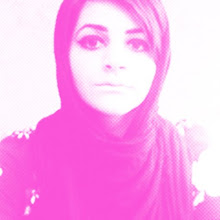Friday, October 1, 2010
Thursday, March 11, 2010
Tuesday, March 9, 2010
Monday, March 8, 2010
Wednesday, March 3, 2010
Tuesday, March 2, 2010
Sunday, February 28, 2010
Wednesday, February 24, 2010
Monday, February 22, 2010
Monday, February 15, 2010
Saturday, February 13, 2010
Friday, February 12, 2010
Wednesday, February 10, 2010
Monday, February 8, 2010
Thursday, February 4, 2010
midterm review slides











The biomimetic strategy employed for the Mars space base is the durian. The durian's thorny exterior protects interior flesh and seeds from predators. In the space base, an inflatable and pressurized superstructure is employed to house and protect it's interior spaces from large amounts of radiation, while serving to reduce atmospheric pressure as well as provide insulation. In the durian, seeds serve on the inside as individual units, yet function as a whole to hold adjacent seeds in place. Likewise, the interior of the inflatable superstructure houses a series of individual and pressurized volumes that provide space at an individual level, yet work as a unit to provide shelter in a highly prescribed environment like that on Mars.
biomimetics


As I have been working through this, I noticed that I have been moving away from the pomegranate and mimicking the durian more.
- Biomimetic strategy: Durian
Thorny durian exterior protects interior flesh and seeds from predators.
Inflatable and pressurized superstructure can houses and protect.
Seeds, safe on the inside as individual units, yet function as a whole to hold in adjacent seeds in place.
Interior of the inflatable superstructure can houses a series of individual
and pressurized volumes.
Like durian skin, a superstructure will serve to protect interior spaces from radiation, the lack of insulation, and provide sound protection through the double skin system.
Tuesday, February 2, 2010
inflatable structure

Construction process
1. Robots shape ground for construction while compacting soil to provide stability and flatten interior walking paths
2. Robots create substructure and edge support by positioning themselves on along edges of site plan
3. Un-inflated tensile structure printed on ground in dome shape. Material: inflatable, pressurized, tensile structure using fiber composites
4. Airmuscles printed around periphery of fabric, and constrain fabric to acheive various forms
5. Substructure is pressurized via robots, lifting inflatable and constrained structure
6. Interior double-skin is internally filled with structural foam capsule that breaks with pressurization
7. 3d printers print and build internal volumes repeating steps 3-5
Pro: large volumes can be enclosed, easy to transport, cheap
Inflatables material shields radiation and creates a pressurized environment.
design strategy and floor plans
Saturday, January 30, 2010
mesh + air muscles = new structural system

What are air muscles? I know, right. Well, in short..
http://www.interactivearchitecture.org/musclebody-kas-oosterhuis.html
The air muscle is an actuator that works like the human muscle. It contracts by thickening. A balloon is pumped with high pressure air, inflated, and the muscle shortens. This can pull substantial weights--400x their weight. True story. Typical DCmotors or pneumatic actuators can exert 16x their weight. Largest standard muscle is 11", weights less than 3 oxz, and can lift up to 154 lbs. Air Muscles work when twisted, bent around corners, or under water.

Source
program--further development on gateway for mars

So here's the idea at 2 am on a Friday night. 5 sectors with cross over
1. Hospitality--visitors stay for hours-days as they get settled on Mars
(a) Lobby
(b) Restaurant
(c) Bathroom/baths
(d) Air locker to change for exit
2. Communications
(a) I'll research this...
3. Environmental Conditioning
(a) Outdoor space for walking
(b) Conditioning center
(c) Air locker to change for exit
4. Extra vehicular activity
(a) Rover parking for tours
5. Space base
(a) Where rockets land! Will also research
6. Shop
(a) Area to fix Rovers/shuttles
early exploration of materials and methods
Subscribe to:
Comments (Atom)






































